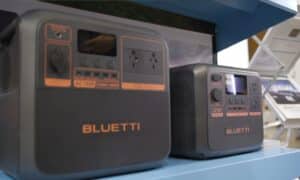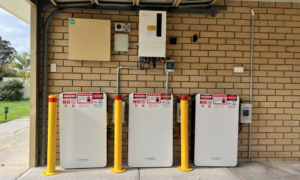If we thought about all the water on Earth, we wouldn’t even be able to put it into perspective. With such an abundance of oceanic content here on our very own planet, there’s no wonder that scientists are busy hustling away to work out how we can use this gigantic volume for renewable energy efforts. Surely, within the mass that we have available, we can extract its power and utilise it for the urgency we so desperately need met across the globe?
Turns out we may just be able to, with an Australian research team discovering a potential solution that could leverage osmotic pressure to generate energy. And there’s a twist: recycled Kevlar (a heat-resistant, synthetic fibre) could also take on a role.

If you’re not sure about this topic, osmosis is – in a nutshell – a passage of water through a membrane. The electricity comes with the seawater itself. So when you have salt and ions involved, you’ve got some power brewing (in a very basic explanation).
If the sea water is isolated from fresh water by a specific membrane, the two different sides try to establish a balance. This is when pressure is generated and can then be converted into sources of energy.
It sounds all well and good but there’s a whole lot to the picture that we couldn’t easily throw into words. Which is why we’re all trusting the good, old Aussie team based at Deakin University to explain it better for us. Essentially, they say:
“[The process] must combine high mechanical properties with high surface charge, nanochannel density, scalability of production and environmental resilience.”
What about using bone?
Researchers have actually been exploring the potential to use osmotic pressure to create energy since the 1970s – it’s not a new concept. But where the fresh take lies is the advancements of fabrication methods, allowing researchers to create new materials on nanoscale.
The Australian team took inspiration from similar osmotic activity that happens in our own bodies. They noted a significant difference between bone and soft tissue, and then further contrasted that with the ability for each to transport ions.
In essence, bone is extremely strong so any kind of new fabric or material based on a bone structure could create something potentially game-changing for a membrane. The downside is that bone is not so great at transporting ions. In contrast, our soft tissue – like kidneys and cartilage – transport ions effectively but the structure is weak (compared to bone). Can you see where the dots connect?
Researchers are currently looking at creating a composite membrane that uses the benefits of both materials, using nanoscale layers of each. They particularly chose aramid fibres for the soft tissue substitute and boron nitride platelets for the bone alternative.
There’s plenty of further exploration to be done for the team, including using recycled kevlar to complete the process, but it’s exciting times nonetheless.











































